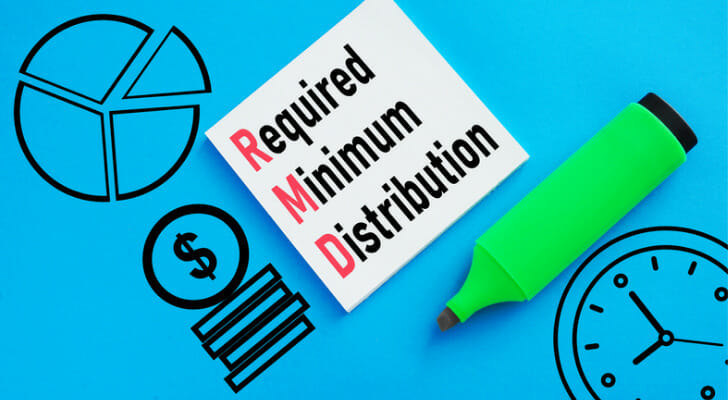 The House of Representatives has passed the SECURE Act 2.0, otherwise known as the Securing a Strong Retirement Act. This bill tweaks the laws around tax-advantaged retirement accounts in several different ways, but it’s particularly good news for two groups: late retirees and graduates.
The House of Representatives has passed the SECURE Act 2.0, otherwise known as the Securing a Strong Retirement Act. This bill tweaks the laws around tax-advantaged retirement accounts in several different ways, but it’s particularly good news for two groups: late retirees and graduates.
Consider working with a financial advisor as you weigh how RMD rule changes will affect your financial picture.
What Is Secure 2.0?
The SECURE Act 2.0 expands on retirement changes made by the SECURE Act, a previous bill passed in 2019. Both laws adjust employer-sponsored retirement plans in a number of ways, from 401(k) startup costs to streamlined paperwork. Sponsors have described both the SECURE Act and the SECURE Act 2.0 as cleaning up the retirement system overall, making it easier for workers to save and easier for employers to run their programs.
While not everyone will necessarily benefit from SECURE 2.0, it will touch on most retirement accounts in one way or another. Two groups in particular will benefit from these new rules.
Late and Wealthy Retirees Get Required Minimum Distribution Hikes
The SECURE Act 2.0 raises the age at which retirees must take required minimum distributions (RMDs).
Tax advantaged retirement accounts like a 401(k) or a traditional IRA come with a rule called required minimum distributions. This is the amount of money that you have to withdraw from the account each year. Before reaching the RMD age limit, you do not have to withdraw anything from your retirement account if you choose.
As the IRS explains, “you cannot keep retirement funds in your account indefinitely. You generally have to start taking withdrawals from your IRA, SIMPLE IRA, SEP IRA, or retirement plan account when you reach age 70.5 [or 72 for those who reach 70 on July 1, 2019 or later].” The age limit was increased by the first SECURE Act, which pushed if from 70.5 to 72. The next version of the SECURE Act will add three years to that cap, raising it from 72 to 75.
The only significant exception to this rule is a Roth IRA, which does not have any required minimum distributions. This is because the basis of the RMD rule is taxation. The IRS allows you to invest money tax-free in most retirement accounts, so it eventually wants to collect taxes on those funds. With a Roth IRA you’ve already paid taxes on your retirement fund, so the IRS has little interest in how you manage it.
The exact amount that you must withdraw from a retirement account is based on a formula that includes your age and the amount of money in your account. The IRS bases this calculation on a sheet called the Uniform Lifetime Table.
For workers who choose to retire later, or retirees who want to delay withdrawals, the increased RMD cap can be a significant advantage. With more money in your retirement account for an additional three years, your account will enjoy additional tax-free growth at its maximum value. In addition, when you do begin to make withdrawals, your required minimum distribution will be lower for any given year because increasing the age limit changes how the IRS calculates these withdrawals.
As people work later and live longer, healthier lives, this can be a significant advantage for retirement planning. It can also be a significant help for people who retire into a rocky financial climate, since they have more flexibility to wait out a bear marker.
However critics have argued that increasing the age limit for RMD almost exclusively advantages wealthy retirees, as they’re the ones who can afford to delay taking withdrawals from their retirement accounts. This benefit for high-wealth households comes at a significant cost for the federal government in uncollected taxes. The RMD rule was created to prevent people from using their retirement accounts as a tax and inheritance shelter, and each year that the government extends the deadline means the IRS will collect less in taxes from both individuals and their estates.

A Boost To Savings For Grads
Workers with student loans also get some help from the SECURE 2.0 Act. This is perhaps the law’s most significant set of policy changes.
Student debt has created a slow-growing crisis for millennial and Generation Z retirement accounts. Many graduates enter the workforce with substantial, often high-interest, debt and prioritize paying those loans over other financial concerns. As a result they often don’t have a retirement account at all, putting that money towards debt instead.
The SECURE 2.0 Act makes two changes to try and help with this.
First, employers that offer a 401(k) or 403(b) retirement program would be required to auto-enroll all employees. Employees would still be allowed to leave the program if they choose; this law would simply reverse the current model. Instead of workers not participating in a retirement plan unless they choose otherwise, employers would include everyone by default unless any individual opts out.
Employers are currently allowed, but not required, to auto-enroll their employees in office retirement plans. This has been shown to significantly increase participation, particularly among younger workers.
Second, and arguably more importantly, SECURE 2.0 expands the retirement system to account for student loan payments. Employers that make matching contributions to retirement accounts can now do so on the basis of both an employee’s individual contributions and their student loan payments. For example, if an employee has paid $100 to a qualified, federally recognized student loan in a given month, their employer could contribute $100 to their 401(k). This is a significant departure from the current system, in which graduates who prioritize debt payment cannot participate in an employer-run retirement plan.
“This section,” the House Ways and Means Committee writes, “is intended to assist employees who may not be able to save for retirement because they are overwhelmed with student debt, and thus are missing out on available matching contributions for retirement plans. Section 109 would allow such employees to receive those matching contributions by reason of repaying their loan.” At least a third of millennials and generation Z graduates who hold student loans have delayed saving for retirement to prioritize student loan payments. While the matching contributions would be voluntary for the employer, it could still make a significant difference in the rate of retirement planning for young workers.
After its passage in the house, SECURE 2.0 has now moved to the Senate which is expected to pass a largely comparable version of its own.
Bottom Line
The House of Representatives has passed a retirement bill called SECURE 2.0. The new law would make numerous changes to how retirement works, with two major adjustments coming for late and wealthy retirees as well as student borrowers.
Tips for Retirees
- SmartAsset’s asks the question that everyone is afraid to answer: Will student loan debt haunt you into retirement?
- Want to figure out how RMD changes will affect your retirement? With SmartAsset’s matching tool you can find a financial professional near you to help you make sense of the road ahead.Don’t miss out on news that could impact your finances. Get news and tips to make smarter financial decisions with SmartAsset’s semi-weekly email. It’s 100% free and you can unsubscribe at any time. Sign up today.For important disclosures regarding SmartAsset, please click here.
Photo credit: ©iStock.com/Andrii Dodonov, ©iStock.com/BrianAJackson